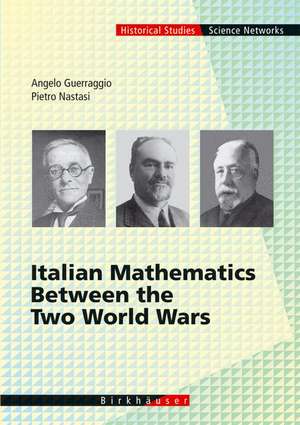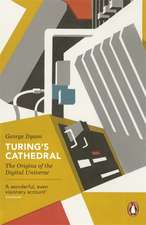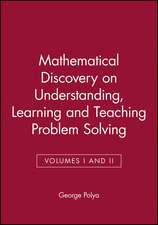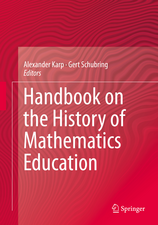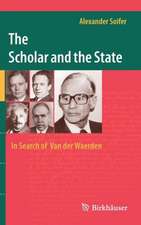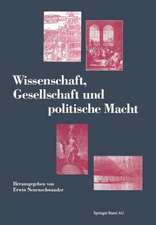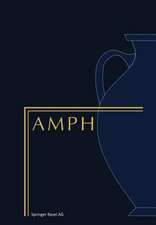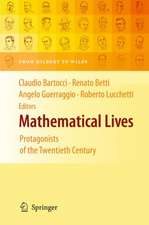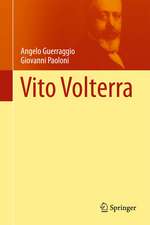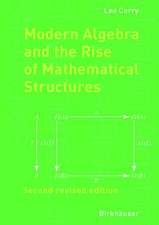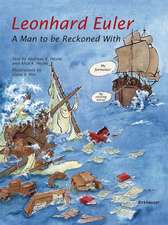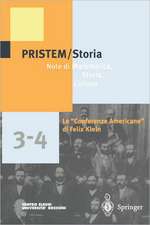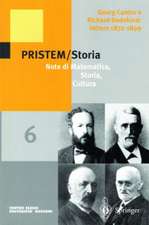Italian Mathematics Between the Two World Wars: Science Networks. Historical Studies, cartea 29
Autor Angelo Guerraggio, Pietro Nastasien Limba Engleză Hardback – 17 noi 2005
Din seria Science Networks. Historical Studies
- 18%
 Preț: 796.31 lei
Preț: 796.31 lei - 15%
 Preț: 652.49 lei
Preț: 652.49 lei - 18%
 Preț: 787.15 lei
Preț: 787.15 lei -
 Preț: 385.25 lei
Preț: 385.25 lei -
 Preț: 489.30 lei
Preț: 489.30 lei - 15%
 Preț: 476.75 lei
Preț: 476.75 lei -
 Preț: 389.31 lei
Preț: 389.31 lei - 15%
 Preț: 699.59 lei
Preț: 699.59 lei - 15%
 Preț: 660.37 lei
Preț: 660.37 lei - 15%
 Preț: 531.59 lei
Preț: 531.59 lei - 24%
 Preț: 909.27 lei
Preț: 909.27 lei -
 Preț: 396.24 lei
Preț: 396.24 lei - 18%
 Preț: 903.17 lei
Preț: 903.17 lei -
 Preț: 382.36 lei
Preț: 382.36 lei -
 Preț: 395.25 lei
Preț: 395.25 lei - 15%
 Preț: 647.73 lei
Preț: 647.73 lei - 15%
 Preț: 702.87 lei
Preț: 702.87 lei - 15%
 Preț: 674.74 lei
Preț: 674.74 lei - 15%
 Preț: 655.60 lei
Preț: 655.60 lei - 15%
 Preț: 644.82 lei
Preț: 644.82 lei - 15%
 Preț: 646.62 lei
Preț: 646.62 lei - 18%
 Preț: 1119.08 lei
Preț: 1119.08 lei - 18%
 Preț: 1135.46 lei
Preț: 1135.46 lei - 20%
 Preț: 595.48 lei
Preț: 595.48 lei - 20%
 Preț: 596.59 lei
Preț: 596.59 lei - 15%
 Preț: 649.06 lei
Preț: 649.06 lei - 20%
 Preț: 567.63 lei
Preț: 567.63 lei - 15%
 Preț: 639.37 lei
Preț: 639.37 lei -
 Preț: 399.12 lei
Preț: 399.12 lei - 18%
 Preț: 1390.11 lei
Preț: 1390.11 lei -
 Preț: 361.03 lei
Preț: 361.03 lei - 18%
 Preț: 1395.63 lei
Preț: 1395.63 lei - 15%
 Preț: 642.36 lei
Preț: 642.36 lei - 15%
 Preț: 648.24 lei
Preț: 648.24 lei - 15%
 Preț: 649.06 lei
Preț: 649.06 lei -
 Preț: 392.37 lei
Preț: 392.37 lei
Preț: 650.19 lei
Preț vechi: 764.93 lei
-15% Nou
Puncte Express: 975
Preț estimativ în valută:
124.41€ • 129.91$ • 102.74£
124.41€ • 129.91$ • 102.74£
Carte tipărită la comandă
Livrare economică 15-29 aprilie
Preluare comenzi: 021 569.72.76
Specificații
ISBN-13: 9783764365554
ISBN-10: 3764365552
Pagini: 312
Ilustrații: X, 299 p.
Dimensiuni: 178 x 254 x 22 mm
Greutate: 0.69 kg
Ediția:2006
Editura: Birkhäuser Basel
Colecția Birkhäuser
Seria Science Networks. Historical Studies
Locul publicării:Basel, Switzerland
ISBN-10: 3764365552
Pagini: 312
Ilustrații: X, 299 p.
Dimensiuni: 178 x 254 x 22 mm
Greutate: 0.69 kg
Ediția:2006
Editura: Birkhäuser Basel
Colecția Birkhäuser
Seria Science Networks. Historical Studies
Locul publicării:Basel, Switzerland
Public țintă
ResearchCuprins
The Italian school of algebraic geometry.- Mathematical physics.- Analysis.- Mathematicians at the front.- Volterra's leadership.- Rome 1921.- The foundation of the U.M.I. and the C.N.R.- Fascism.- Giovanni Gentile and the school reform.- Severi, mathematician and politician.- Enriques and his school.- Castelnuovo, probability and 'social mathematics'.- Tullio Levi-Civita.- The Thirties.- Towards disaster.- The International Congress of 1936.- The anti-semitic laws of 1938.- Crisis.
Recenzii
From the reviews:
“What the book conveys is the richness of Italian mathematics throughout the period and, despite being expert in none of these fields, the authors captured my imagination and made me want to know more of such mathematical ideas … immensely enjoyable for all that.”(MAA REVIEWS)
“What the book conveys is the richness of Italian mathematics throughout the period and, despite being expert in none of these fields, the authors captured my imagination and made me want to know more of such mathematical ideas … immensely enjoyable for all that.”(MAA REVIEWS)
Textul de pe ultima copertă
This book describes Italian mathematics in the period between the two World Wars. We analyze its development by focusing on both the interior and the external influences. Italian mathematics in that period was shaped by a colorful array of strong personalities who concentrated their efforts on a select number of fields and won international recognition and respect in an incredibly short time. Consequently, Italy was considered a third "mathematical power" after France and Germany, and qualified Italian universities became indispensable stops on the "tour", organized for the improvement of young foreign mathematicians. In the 1930s Italian mathematics had to face the increasing growth of other countries' mathematics, which forced consideration of new mathematical topics. This comparison between the interior and exterior perspective makes this history particularly compelling. At that time, Italy was also dominated by a fascist regime. This political situation and the social and academic structure of Italian society are included in the analysis as influences external to mathematics itself. The authors have provided a fascinating study of a most difficult time in the history of the world and of mathematics.
Caracteristici
History of a nation as "mathematical power" Study of a difficult and exciting time shaped by strong personalities
